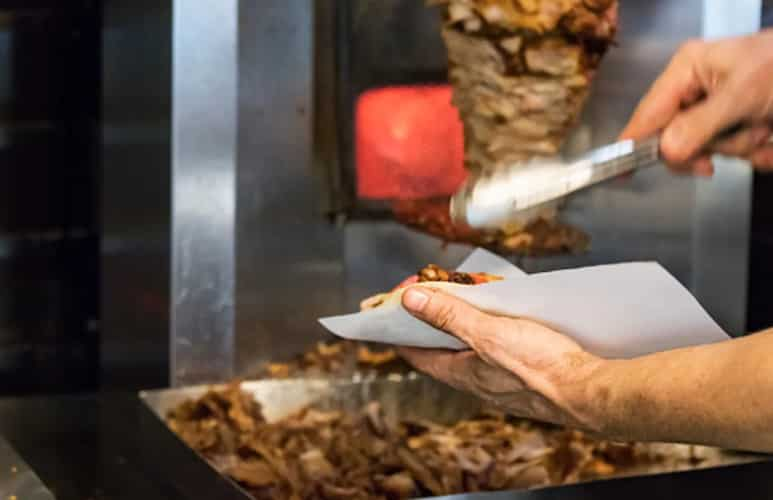A gyro (pronounced YEE-row) is a Greek sandwich served on pita bread. "Gyro" means "round" in Greek and refers to piled meat grilled on a vertical rotisserie.
Gyros are usually made with pork in Greece, but chicken is also popular, and the meat slices are heaped on a spit. In contrast, American gyros are often constructed from a loaf of ground beef and lamb.
In a pita, Greek gyros are packed with tomato, red onion, a few French fries, and a generous helping of tzatziki (a Greek sauce or dip made with yoghurt and cucumbers). In the United States, lettuce is occasionally added to the mix, and French fries are frequently served on the side.
Gyro meat is frequently seasoned with Greek herbs such as rosemary, oregano, and thyme.
The History
Clouds obscure the dish's origin, which is mainly unknown. According to food historians, the gyro arrived in Greece in the early 1920s as a refugee from Asia Minor, primarily from Constantinople (now Istanbul) and Smyrna (now Izmir). Many of these folks were of Greek descent, and they brought the gyro tradition with them. However, some tales claim that the first gyro vendors in Athens were of Armenian descent. These refugees frequently opened modest shops, primarily in Athens, which contributed to the food's appeal. The dish spread throughout Greece as the people of Athens became more aware of it. Greeks who emigrated to other countries, such as the United States, eventually brought the meal with them, and the custom was carried on in countries like the United States and Canada.
As far as food travel theories go, the above appears to be rather clear. Other hypotheses as to the origins of this very delicious though rather less than healthy wrap abound in Greek food, which is filled with layers of history far more intricate than a finely spiced or marinated real gyro. According to some stories, the gyro is the scion of a long and ancient family of skewered meat feasts, with roots dating back to the time of Alexander the Great and his returning forces, whose soldiers were known to skewer and roast various pieces of meat over an open fire on long, swordlike blades.
Gyro is found anywhere where there are Greeks, and it is unquestionably one of the most popular tourist foods. Of course, the selling of this delectable street wrap has spread beyond mom-and-pop shops to American chains (some of which are owned by Greeks) and the internet. In Greece, there are dozens of internet sites where you may purchase a gyro for delivery to your home. Gyros are a strong emblem of Greek casual dining and street cuisine in the United States and internationally.

Gyros are made by Greeks, Arabs, and Turks alike. Doner kebab is the Turkish name for this delicious street meal, which is made with lamb or beef. It's called shawarma in Arabic, and it's made with beef, lamb, goat, or chicken. In some regions of the Arab world, gyro/doner kebab/shawarma is served with a thin, delectable sprinkling of seasoned pistachios instead of yoghurt or tzatziki. Yum. Delicious is a worldwide term.


